Last updated: March 23, 2024
Article
A Long-Awaited Asset
Although the United States Park Police (USPP) traces its roots back to the force established by President George Washington in 1791, it didn’t become part of the National Park Service (NPS) until 1933. USPP began to recognize the value and competence of policewomen in the early 1940s. Although few were hired in limited roles and they didn’t wear police uniforms, these women officers had more success at establishing long careers and rising within the ranks than early women park rangers.
A Decoy for “Mashers”
Beatrice V. Ball was born on December 2, 1902, in Garden Valley, Idaho, to James and Catherine Scanlon Ball. She moved with her parents and two brothers to Vici, Oklahoma, where graduated from high school in 1922. That same year she enrolled in Northwestern State Teachers College in Alva, Oklahoma, graduating with a BS in Social Science in 1929. Working her way through college, in 1924-1925 she taught seventh grade and served as a basketball coach in Vici. For the next two years she taught sixth grade and coached in Wiley, Colorado, followed by a year as a high school teacher and basketball coach in Grand Valley, Colorado. In 1929 she joined the staff of the Young Womens Christian Association (YWCA) in Grand Valley, working as general secretary as she coached basketball at Ross Business College.
In 1930 she returned to Northwestern State Teachers College to study journalism, working part-time as a reporter with the Alva Daily Review Courier. Her journalism career was short, however, and she didn't finish her degree. While at a YWCA she saw an advertisement for policewomen with the Metropolitan Police Department in Washington, DC. She took the required Civil Service policewoman exam, scoring within the top three. On August 21, 1931, was offered a position as private (class 1) with the department's Women’s Bureau.
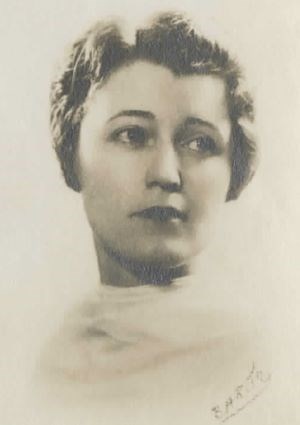
She held that job for a decade, working her way up to a private (class 6). In one memorable case around 1935 she was the bodyguard for a woman set to testify against a notorious gang. While working she earned a law degree from Columbus University in 1939. She was the first woman to attend that university’s school of criminology for police officers.
Newspaper accounts from 1941 describe her as "an expert pistol shot, a rodeo rider, a professional basketball player and coach, a physical director, a schoolma'm, a law school graduate, and a trained detective”—and all before she was 39 years old.
In 1941 the USPP sought to recruit a dozen officers in an effort to properly police the rapidly expanding national park system in the National Capital Parks. One of the vacancies was filled by transferring Ball from the Metropolitian Police Department. Although newspaper accounts report that she joined the USPP on January 1, 1942, there was a delay in her transfer due to a typographical error in her police exam score. Her official personnel file records her start date as May 1, 1942. The lateral transfer meant that she continued as a private (class 6) and her salary of $2,400 per year remained the same.
As the first USPP policewoman, Ball was hired to take charge of all cases involving women and children and as “a decoy for mashers and criminal elements” operating in the parks. She was the only woman among 90 male officers. When she was hired, Park Police Chief Mark H. Raspberry noted that Ball represented a “long-awaited asset” and that a woman operative “has been something needed for years."
Ball’s USPP career was short, however, because she chose to join the war effort. Determined to have a “more concentrated war job—not just fooling around with some halfhearted efforts,” she asked permission to apply for a commission as a lieutenant junior grade in the Women's Reserve of the US Navy (known was WAVES). On August 31, 1942, she submitted a request to Raspberry for release from duty noting,
At the end of the such services with the Navy I respectfully request that I be reinstated in my present class at the US Park Police service. My previous training and experience make it possible for me to assume responsibilities in the line of investigation in the Navy that few women candidates possess at the present time. Therefore it is urgent that I assume these duties as soon as possible. I have passed the examinations and requirements necessary for [this] commission.
The Department of the Interior (DOI) approved her request on September 4, 1942. She was called to active duty on November 10, 1942. She was furloughed from her USPP job, which gave her reinstatement rights to the position when World War II ended. Her position was backfilled by several men over time rather than by another woman.
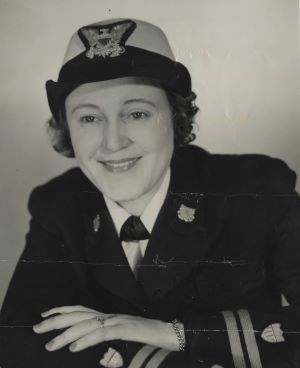
After the US Coast Guard (USCG) Women’s Reserve (known as SPARS) was established, she transferred there. She was one of the first class of 13 women to attend the Coast Guard Academy. She became the first SPARS officer assigned to the USCG’s Office of Intelligence. During the war she became an assistant intelligence officer in Washington, DC, and was the first SPARS to be assigned intelligence work in New York and Miami.
As the war in Europe was coming to an end, Ball and other active duty personnel received received a memo in May 1945 from the DOI stating in part,
We intend to see that your rights are fully respected. Not only that, but we intend to place you, according to qualifications and eligibility, where you can serve both yourselves and the Department to the best possible advantage.
Questionnaires were sent to the DOI employees in the Armed Forces so that "the greatest possible use can be made of the new knowledge and skills that you have acquired while in service." Ball indicated that she was interested in something besides police work. In 1945 the USCG sent her to Ketchikan, Alaska, as a personnel officer. By the time she was released from active duty in 1946 she had attained the rank of lieutenant commander and was authorized to wear the American Theater of War, Asiatic-Pacific Theater of War, and Victory ribbons.
The Board of Police and Fire Surgeons medically cleared her to return to USPP on April 13, 1946. She requested reinstatement effective August 16, 1946. However, Ball decided to pursue a BFA degree from Denver University instead and resigned effective August 31, 1946.
In 1951 the Korean War saw her recalled as assistant to the chief of the special services division at USCG headquarters. She rose to the rank of commander before she retired in 1961. She died of cancer in 1963 and is buried in Arlington National Cemetery.
Upsetting Traditions
Lydia Helen Henja was born in Renfrow, Oklahoma, on November 11, 1908, to Bohemian immigrants. Her father was institutionalized for mental health issues and by 1920 she was living in Omaha, Nebraska, with her mother. In February 1926 she married Ralph Barton, a mechanic living in Sioux City, Iowa. They had a son in November of that year and continued to live in Omaha. The Bartons divorced in 1930, and Lydia and her son moved to Washington, DC.
Her granddaughter Kitty Smith recalls, “Before coming to Washington, DC, she took a Civil Service exam in Omaha. About a year later, she received a letter offering her a job as an elevator operator at the Department of the Interior. Times were tough and she became the breadwinner for her entire family.” She began that job on February 12, 1934.
On November 11, 1935, Barton was promoted to an under clerk with the NPS. She took the Civil Service exam and was quickly promoted to junior clerk. In September 1936 she was promoted the assistant mail, file, and records clerk in the National Capital Parks office. In August 1942 USPP was still trying to fill its new positions (one of which went to Ball as described above). The captain of the USPP “asked her if she would be interested in the very non-monotonous job of being a policewoman—badge, firearms, patrol duty, et al.” After discussing it with her supportive son, she took the Park Police exam on September 19, 1942. Barton became USPP’s second policewoman on October 1, 1942. Although Ball left USPP six weeks later, it seems likely that the two women would have at least been aware of other.
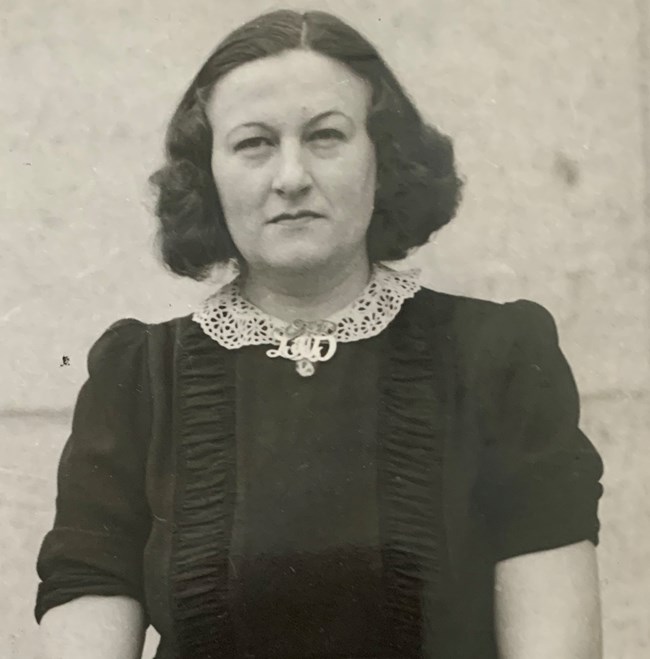
Her captain described her as “one of the best on the force.” In January 1943 Private Barton became the first woman to attend the Park Police Training School, which was started three years earlier. She attended with 15 male colleagues. One newspaper account reportedly described the men as “startled” by her presence at the training session. Another noted that she “upset tradition” by attending. The training included fingerprinting, riflery, searches and seizures, secret code, and laws of arrest. An article in the Evening Star (Washington, DC) noted that Barton “received the same training and pay as the men on the force.”
Her work included “patrolling parks, being a lady truant officer, and handling juvenile and women offenders.” Her “disarming feminine grooming” was listed as an advantage in her role as a plainclothes officer and she reportedly had a “natural gift for winning confidence.”
Smith recalls, “In the beginning she patrolled many of the 72 small DC parks where she famously attracted perverts who she apprehended and called for back up, all while maintaining the evidence. She later moved indoors and set up the entire filing system for the Park Police.” According to family records, Barton attended a five-month training course in 1948 and multiple supervisory training courses over the next decade.
She married Costas Michos in 1950. By 1958 she was promoted to the rank of corporal. In December 1962 she became a sergeant. Known affectionately as “the boss” to her family, Michos is remembered by them as “a strong-willed, independent woman.” Smith recalls, “She once told me that she trained a couple of chiefs, adding that it wasn’t her (or any woman’s) time for leadership.”
Sergeant Michos suffered an on-duty accident in 1965. She retired in 1967 as the officer in charge of the Records Branch. She received the Meritorious Service Award "in recognition of exceptional service in the Department of Interior."
She died at St. Mary’s Hospital in Leonardtown, Maryland, on February 16, 1990. Although she had retired 23 years earlier, Smith recalls that “more than a dozen Park Police motorcycle patrolmen showed up unexpectedly at the funeral home on their Harleys. The roar of the engines brought tears to my eyes. They escorted their fellow police officer over 20 miles to the cemetery where she is buried, stopping traffic and clearing the way for her precession. What an honor.”

The First African American Woman Officer
Gertrude E. Wilson, known as Gertie, was born Gertrude Elnora Willis in Mississippi in 1914. She attended Jackson State College. She married Levi Wilson on December 24, 1942.
She received a War Service Appointment as an junior clerk with the Office of Price Administration in Washington, DC, on September 14, 1942. She worked in the Statistical and Recording Unit of the Tire Rationing Branch of the Automotive Supply Rationing Division. In January 1943 she was promoted to assistant clerk. On October 25, 1943, she transferred to the Post Office Department as a clerk.
On May 1, 1944, Wilson took the Park Police examination, scoring 81.00 (the highest score to date for a USPP policewoman). On August 7, 1944, she received a probationary appointment as a private (class 1) with the USPP, backfilling the position held by Gerald S. Dennis who was furloughed for military service. Her salary was set at $1,900 per year, $200 more than she earned as a clerk at the Post Office.
By 1946 Wilson had proved herself to be a valuable police officer, and her salary had increased to $2,320. The USPP became concerned that it might lose her when Dennis returned from the war. Her official personnel file notes,
While serving as a member of the Park Police force, Mrs. Wilson has rendered very satisfactory services, and it is desired to assign her to a position of a more permanent nature to obviate the possibility of losing her services upon the return to duty of Mr. Dennis.
Effective February 16, 1946, she was promoted to private (class 2) in a new position. Her new salary was $2,505.
Despite this support from management, we don't know what Wilson's specific experiences were as a woman of color in the USPP in the 1940s. Inevitably she would have experienced the same discrimination that other African Americans experienced at the time. A 1949 Jackson (MS) Advocate article reported that the Secretary of the Interior issued an order directing that the USPP eliminate discrimination based on race, color, religion, or national origin. This order was based on findings of a Fair Employment Committee assigned to address the complaint of segregation and discrimination against Black USPP officers. The article recorded a total of 113 employees at the time, with 13 minorities on the force, including one policewoman of color. Although not mentioned by name, that policewoman was surely Wilson. It's not known, however, if she was one of the complainants in this case.
The 1950 US Census records that Wilson was a USPP policewoman but nothing is known about her duties at the time. No photographs of her have been found.
Wilson was serving as a juvenile officer and crime photo assistant when she retired on June 30, 1966. She received a Commendable Service Award for her 22 years of service with USPP and more than 23 years with the federal government. She died on January 23, 1978.
"She Always Gets Her Man”
The USPP’s fourth confirmed woman police officer was born Grace Hattie Jens on March 2, 1917, in Manitowoc, Wisconsin. In March 1940 she married Carl Judy in Michigan. They were both schoolteachers. After their marriage, the couple moved to Washington, DC, where Carl worked as a clerk for the government. She began working for the federal government in December 1940 but it's not clear where or in what capacity.
On January 1, 1945, Grace H. Judy began work as a plainclothes officer with the USPP. For over a decade her duties included protecting “women and children from molestation in the parks.” She often returned to scenes of crime pretending to be a potential victim—all the while carrying a revolver, blackjack, and claw (which looked like half a handcuff and was pressed against a wrist or ankle) in her purse.
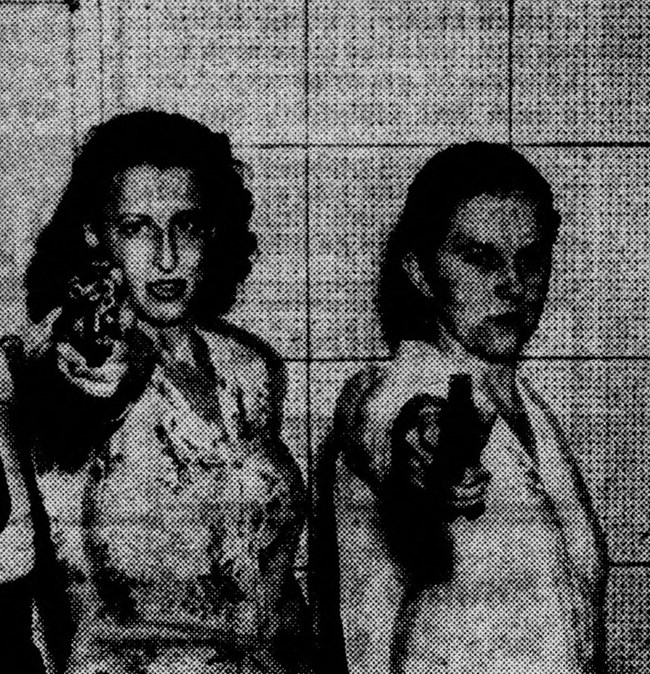
Private Judy responded to sexual assaults, questioning both victims and suspects. She was also assigned to carnivals and circuses. One 1954 newspaper report noted that she “patrolled thousands of acres of Washington park areas on the watch for murderers, suicides, and purse snatchers” while “always get[ting] her man.” Others refer to her work catching car thieves. She eventually moved from the field into administration, but her later career is less well known.
In 1946, Judy placed second among policewomen in the first annual Park Police Gunpowder Sweepstakes. In a sign of the paternalism of the period, the women were allowed to stand closer to the target than the male officers.
The Judys divorced in 1948. She married again on September 1, 1959. Her second husband was Abbie Rowe, an NPS photographer who was also an official photographer at the White House for decades. They divorced six years later.
Records reveal that Rowe was still a private in 1969. She retired from USPP in 1974 as a "senior officer." Grace H. Rowe died on July 2, 1986.
Veda M. Black was another policewoman working in 1946, although her start date is currently unknown. She was the high scorer among women and runner-up overall during the 1946 USPP pistol-shooting contest. Little is known of Black, although she may have been born in Pennsylvania in May 1916. The 1950 US Census records that she was still working as a policewoman for the Department of the Interior at that time. At least one retired officer recalled that she was still working for USPP in the late 1960s, in an administrative capacity.

A Woman Detective
Violet Ida Belcher was born July 14, 1914, in Ovapa, West Virginia. She married Russell B. Markle in 1930 when she was 16 years old. The birth of her first daughter delayed completion of her high school education. The Markles moved to the Washington, DC area in 1935. She returned to school and graduated from Eastern High School in 1936, even lettering in basketball despite having a four-year old at home.
Markle began working for the federal government in March 1943 but it’s not clear if that was with USPP or elsewhere in the federal government. She was certainly working for USPP as a police officer by September 1946. Few specifics are known about her career. In February 1949 she and officer Gertrude E. Wilson (and 12 policemen) completed first aid training. In September that same year, she was almost run over during an arrest. According to a newspaper account of the incident, Private Markle was on duty in Potomac Park when a car drove up beside her vehicle. The man inside exposed himself to her. Markle stepped from her car, showed her badge, and told him he was under arrest. Instead of complying, he drove at her, causing her to jump out of the way to avoid being hit. She was able to get his license plate and he was quickly apprehended by other USPP officers.
The 1950 United States census recorded that she was a “policeman” with the US Park Police, working 48 hours a week. Her husband worked as a fireman. By then, they had also had a second daughter. By at least 1963, she was a detective, a position she held until sometime after 1969. She is likely the first woman detective in USPP history.
Markle died in 1973 in Washington, DC at the age of 59. It’s believed that she was a detective in the criminal investigations branch at the time of her death.
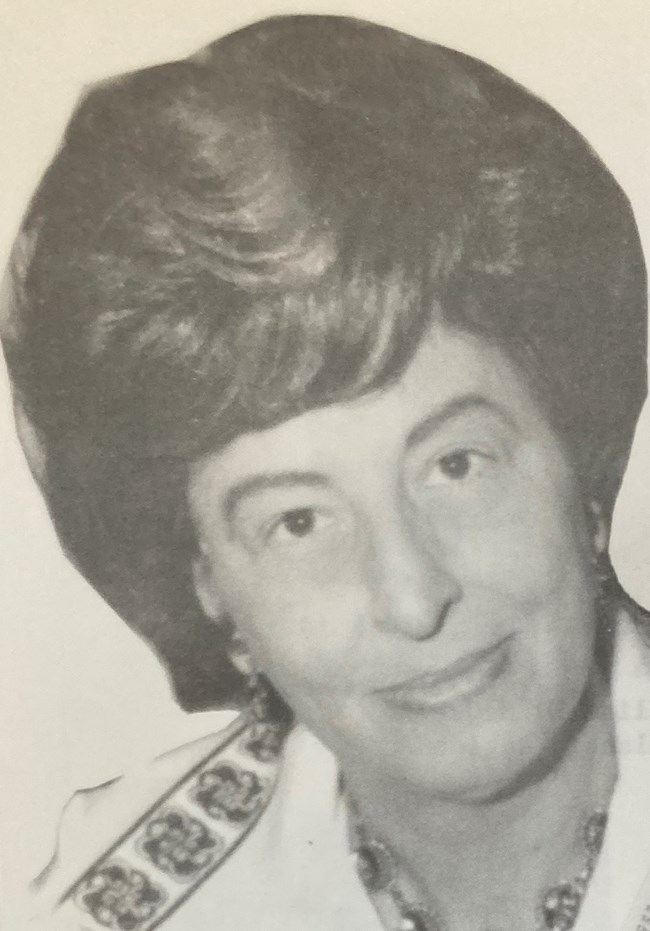
Policewomen but Not Park Rangers
The USPP began hiring women officers about 15 years after the NPS decided that women should no longer be hired as park rangers. Ironically the rangers’ law enforcement responsibilities were part of the argument against women in those positions in 1926, yet the policewomen were armed and frequently used as “bait” for criminals in situations that were arguably more dangerous than those that most women rangers would have encountered at the time.
This apparent contradiction doesn’t seem to have troubled the NPS, perhaps because the urban beat of the USPP policewomen contrasted sufficiently with the western national parks—or perhaps, as argued elsewhere in this portfolio, eliminating women rangers was primarily about Protecting the Ranger Image rather than women’s abilities or safety.
Although policewomen were being hired when women park rangers were generally not, their numbers remained small. They were also all plainclothes officers because USPP didn't have a uniform for women until 1972.
Michos, Rowe, Markle, Wilson, and perhaps Black, continued working, rising in the ranks, and carving out long careers with the USPP but new women officers weren't being recruited in the 1950s and 1960s. Other women had difficulty Measuring Up to the USPP minimum height and weight requirements added in 1970. It would take a legal challenge and a significant increase in force size in the 1970s to open the door to more women police officers.
Sources:
“Ace of DC Policewomen Will Soon Join Park Force.” (1941, December 1). Evening Star, p. A-6.
Ancestry.com. 1950 United States Federal Census. Accessed at https://www.ancestry.com/discoveryui-content/view/61693559:62308?tid=&pid=&queryId=d532280ce9df24add5e4f91df189993d&_phsrc=qhw105&_phstart=successSource on September 27, 2022.
“Beatrice Vivian Ball.” (1963, October 24). The Baltimore Sun, p.21.
Best, Karen Barton. (2022, June 23). Pers. comm. With Nancy Russell, NPS History Collection archivist.
Brown, Vivian. (1943, March 16). “Girls of the Coast Guard Invade Male Territory.” Globe-Gazette (Mason City, Iowa), p. 6.
“Corrective Action Hits Capital Park Police.” (1949, June 4). Jackson Advocate, p. 5.
“Ex-Policewoman Bosses Women of Coast Guard.” (1957, March 29). Lancaster New Era, p. 13.
“Fan Dancer Center of Cotton Club Liquor Hearing.” (1935, July 26). Evening Star (Washington, DC), p. 17.
“Former Oklahoma Woman Becomes WAVES Officer.” (1942, November 1). The Daily Oklahoman, p. 54.
Kaufman, Polly Welts. (2006). National Parks and the Woman’s Voice: A History. University fo New Mexico Press, Albuquerque, New Mexico.
Mackintosh, Barry. (n.d.). National Park Service: History of U.S. Park Police. National Park Service. Retrieved May 20, 2022, from https://www.nps.gov/parkhistory/online_books/police/police6.htm
“She Always Gets Her Man.” (1954, August 22). Evening Star, p. 6.
Smith, Kathryn “Kitty” Barton. (2022, June 22). Pers. comm. With Nancy Russell, NPS History Collection archivist.
“Solider Held in Attempt to Run Down Policewoman with Car.” (1949, September 5). Evening Star (Washington, DC), p. 14.
"Staff Listing." (1969, October 31). NPS History Collection (HFCA-01999), Harpers Ferry Center.
“Two Mothers to be Graduated at Eastern.” (1936, May 5). Evening Star (Washington, DC), p. 19.
US Park Police. (1968, March 21). Annual Report for the Calendar Year 1967.
US Park Police. (1974). Annual Report for the Calendar Year 1974.
US Park Police. (2017, February 28). Facebook post retrieved August 11, 2022 from (5) United States Park Police | Facebook
“Woman Admitted to Park Police Training School.” (1943, January 5). The Evening Star (Washington, DC), p. B-1.
Explore More!
To learn more about Women and the NPS Uniform, visit Dressing the Part: A Portfolio of Women's History in the NPS.
This research made possible in part by a grant from the National Park Foundation.
